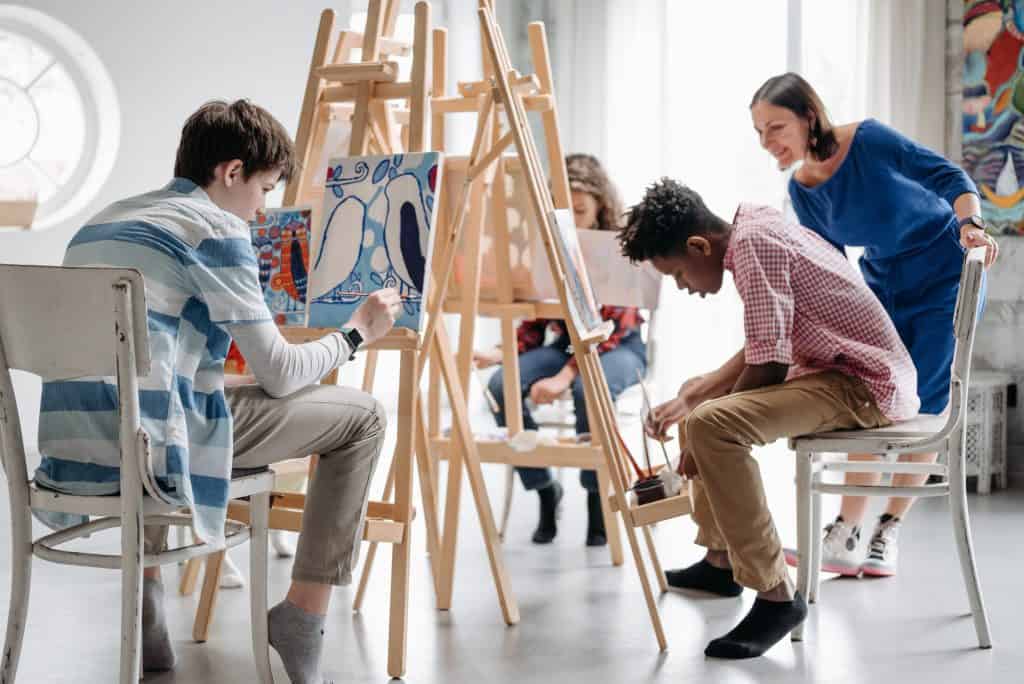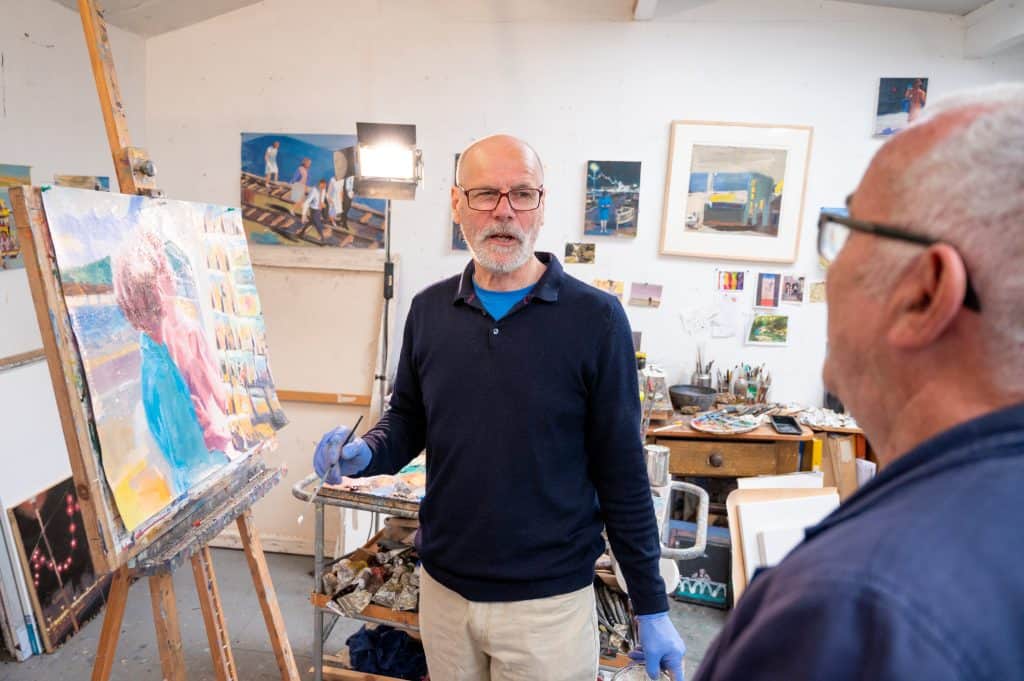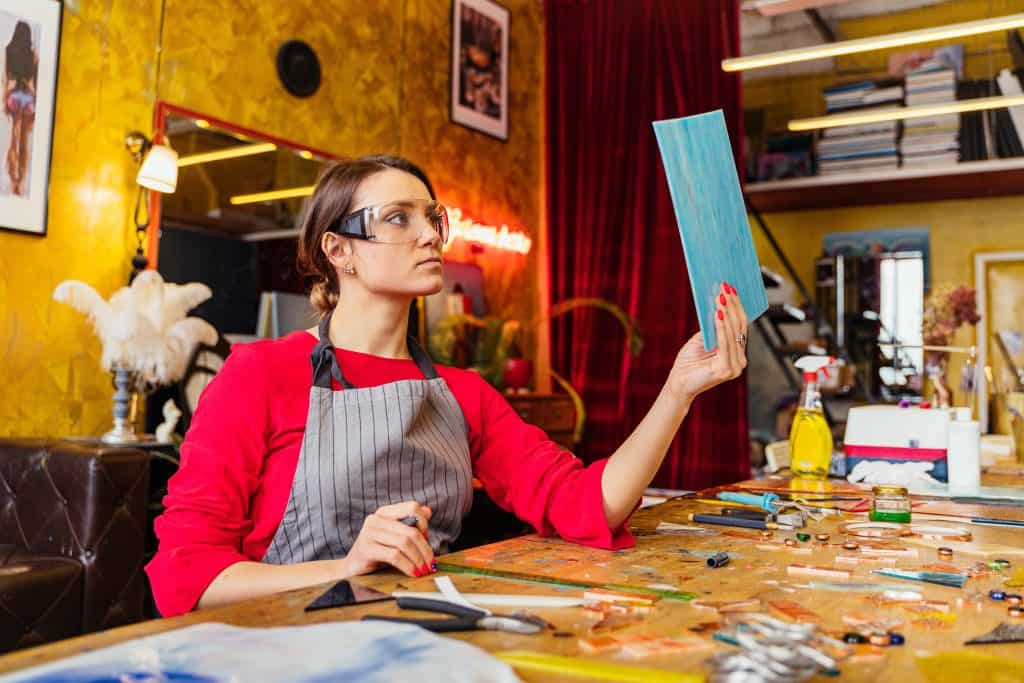
10 Mar Art Education and Its Impact on Societal Development in 2024
Art education is a multifaceted realm that encompasses a rich tapestry of creative disciplines, extending far beyond the boundaries of conventional classroom settings. From the visual arts, music, and drama to dance, literature, and beyond, it serves as a gateway to exploring the depths of human expression and imagination. Beyond mere technical proficiency, art education cultivates critical thinking, problem-solving abilities, and emotional intelligence, fostering holistic development in individuals of all ages and backgrounds. Through hands-on experiences, experimentation, and exposure to diverse cultural perspectives, it empowers learners to navigate the complexities of the world with a heightened sense of empathy, curiosity, and cultural appreciation. As a dynamic force, art education not only shapes individual identities but also contributes to the fabric of society, enriching communities and inspiring positive change on a global scale. Thus, it stands as a cornerstone in the pursuit of creativity, innovation, and lifelong learning.
Examining the Role of Art Education in Individual Growth

Photo by Pavel Danilyuk
Art Education Fosters Cognitive Development
Art education plays a pivotal role in cognitive development by fostering critical thinking, problem-solving, and imaginative skills. Through various artistic mediums, individuals are encouraged to explore creatively, which stimulates their ability to analyze situations critically and devise innovative solutions. Moreover, artistic expression nurtures rich imaginations and divergent thinking, allowing individuals to envision possibilities beyond conventional boundaries. Engaging in artistic activities also demands concentration, honing individuals’ ability to focus and retain information effectively. Thus, art education serves as a catalyst for enhancing cognitive abilities, shaping individuals into more adept thinkers and learners.
Social and Emotional Development
Art education serves as a cornerstone for nurturing social and emotional development in individuals. By providing a platform for self-expression, it enables individuals to refine their communication skills through various artistic mediums. Moreover, exposure to diverse artistic perspectives fosters empathy and a deeper understanding of others, enriching one’s capacity for compassion and connection. Engaging in artistic endeavors also contributes to boosting self-confidence and self-esteem, as individuals witness the tangible results of their creative efforts. Furthermore, group projects within art education promote collaboration and teamwork, encouraging individuals to work collectively towards shared artistic goals. Through these avenues, art education not only facilitates creative expression but also fosters essential social and emotional competencies that are fundamental for personal growth and interpersonal relationships.
Cultural and Global Awareness
Art education plays a pivotal role in fostering cultural and global awareness by expanding individuals’ knowledge and appreciation of diverse cultures and art forms. Through exposure to various artistic traditions and styles, students gain insight into the rich tapestry of human expression across different societies and historical periods. Moreover, art education stimulates critical thinking about societal issues and challenges, prompting students to analyze and reflect upon the cultural, political, and social contexts that shape artistic creations. By engaging with artworks that address pressing issues such as inequality, discrimination, and environmental degradation, students learn to approach complex issues with nuance and empathy. Furthermore, art education promotes respect for diversity by encouraging students to embrace perspectives and experiences different from their own. Through collaborative projects and discussions, students develop intercultural dialogue skills, fostering understanding and empathy across cultural boundaries. In this way, art education serves as a powerful catalyst for promoting cultural exchange, empathy, and mutual respect in an increasingly interconnected world.
Examining the Role of Art Education in Societal Development

Photo by Centre for Ageing Better
Building a Creative Economy
Building a creative economy relies heavily on the foundation of nurturing creative talent through art education. This fundamental aspect not only cultivates individual artistic abilities but also serves as a catalyst for innovation across various industries. By providing individuals with opportunities to explore and develop their creative potential, art education fosters a mindset that embraces experimentation and originality, essential qualities in today’s rapidly evolving economy. Moreover, enhancing critical thinking skills through art education equips individuals with the ability to analyze, problem-solve, and adapt, ensuring their readiness for the dynamic demands of the workforce. As individuals flourish creatively and intellectually, the ripple effects extend beyond personal growth, contributing to the development of vibrant communities. These communities, enriched by diverse artistic expressions and innovative ideas, become hubs of inspiration, collaboration, and cultural enrichment, further fueling the creative economy’s growth and sustainability. Thus, investing in art education not only empowers individuals but also fosters the collective prosperity of societies by nurturing creativity, critical thinking, and vibrant community engagement.
Strengthening Community Engagement
Strengthening community engagement through art education involves multifaceted approaches that promote cultural understanding, social cohesion, and active participation. Firstly, art education serves as a powerful tool for promoting cultural understanding within communities. By exposing individuals to diverse artistic traditions, perspectives, and histories, it fosters empathy, respect, and appreciation for different cultures, ultimately contributing to a more inclusive and harmonious society. Additionally, art education provides invaluable platforms for community expression and dialogue. Whether through visual arts, music, theater, or literature, these platforms offer opportunities for individuals to share their stories, voices, and experiences, fostering a sense of belonging and collective identity. Moreover, art education plays a pivotal role in encouraging civic participation and social responsibility. By engaging in artistic endeavors that address social issues, advocate for change, or provoke critical reflection, individuals become active agents in shaping their communities and advocating for positive societal transformation. Thus, by promoting cultural understanding, providing platforms for expression, and encouraging civic participation, art education serves as a catalyst for building stronger, more cohesive, and socially engaged communities.
Addressing Social Challenges
Addressing social challenges through art education harnesses the transformative power of creativity and expression to tackle pressing societal issues. Art serves as a potent medium for social commentary, amplifying voices and shedding light on critical issues that demand attention. By using artistic expression to confront injustice, inequality, and other social dilemmas, artists provoke thought, stimulate dialogue, and inspire action within communities and beyond. Moreover, art education cultivates critical thinking skills essential for problem-solving in the face of complex social problems. Through the process of creating and analyzing art, individuals learn to question assumptions, explore diverse perspectives, and develop innovative solutions to address societal challenges effectively. Additionally, art education plays a significant role in fostering empathy and compassion among individuals. By engaging with art that reflects diverse human experiences and emotions, individuals develop a deeper understanding of others’ perspectives and struggles, nurturing a more inclusive and empathetic society. Thus, by harnessing art as social commentary, promoting critical thinking for problem-solving, and fostering empathy, art education becomes a powerful force for driving positive social change and creating a more just and equitable world.
Challenges and Opportunities for Art Education

Photo by Rachael Gorjestani
Access to Art Education
Access to arts education continues to pose a significant challenge, especially within diverse socioeconomic contexts where resources may be limited and priorities lie elsewhere. In many underserved communities, the availability of arts programs is often sparse, leaving many students without the opportunity to explore their creative potential and engage with diverse forms of artistic expression. Addressing this disparity requires a multifaceted approach that encompasses policy reforms, resource allocation, and community involvement to ensure that all students have equal access to quality arts education regardless of their background or circumstances.
Integration into Broader Curriculum
Integrating art education into the broader curriculum and societal value systems is essential for fostering creativity, critical thinking, and cultural awareness among students. By incorporating arts into various subject areas, educators can enrich learning experiences and encourage interdisciplinary exploration. Moreover, integrating art education helps cultivate a holistic understanding of the world, encouraging students to engage with complex issues and express their perspectives through different mediums. This integration also underscores the intrinsic value of art as a fundamental aspect of human expression and cultural heritage, promoting its appreciation and relevance across diverse communities and contexts.
Technology and Innovation
Leveraging technology and innovation plays a pivotal role in enhancing and expanding access to art education in the digital age. Technology offers unprecedented opportunities for students to explore artistic techniques, collaborate with peers globally, and access a vast array of cultural resources and educational materials. From online tutorials and virtual exhibitions to interactive design tools and digital platforms, technology enables educators to create immersive learning environments that cater to diverse learning styles and interests. By embracing technological advancements, educators can overcome geographical barriers, accommodate individual learning needs, and inspire a new generation of artists, designers, and creative thinkers poised to shape the future of art and society.

Photo by Antoni Shkraba
Conclusion
Art education enriches cognitive development by stimulating critical thinking, enhancing problem-solving skills, and nurturing the power of imagination. It contributes to social and emotional development by fostering self-expression, empathy, and self-confidence while promoting collaboration and teamwork. On a broader societal scale, art education plays a pivotal role in building a creative economy by nurturing innovative talent and preparing individuals with critical thinking skills for workforce adaptability. It contributes to the development of vibrant communities where cultural understanding and social cohesion flourish.
Art education strengthens community engagement by providing platforms for expression and dialogue, encouraging civic participation, and addressing social challenges through powerful social commentary. It fosters empathy and compassion, laying the foundation for a more inclusive and just society. However, challenges such as unequal access to arts education, integration into broader curricula, and the need for technological innovation must be addressed to fully harness the potential of art education. Thus, art education is not just about teaching artistic skills; it is about nurturing creativity, empathy, critical thinking, and social responsibility. It has a profound and lasting impact on individuals and society at large, shaping a future where imagination and artistic expression continue to play a central role in our collective growth and development.
Key Takeaways
- Art education enhances critical thinking and problem-solving skills.
- It fosters self-expression, empathy, and communication skills.
- Cultural awareness is expanded, promoting respect for diversity.
- Art nurtures creative talent, contributing to a vibrant economy.
- Community engagement is strengthened through cultural understanding.
- Art serves as a tool for social commentary on critical societal issues.
- Challenges include access disparities and integration into broader curricula.
- Technology plays a vital role in expanding access to art education.
FAQs
Is art education only limited to the visual arts?
Art education is not confined solely to the visual arts; rather, it extends its reach across various disciplines, including music, drama, and more. By encompassing such a broad spectrum, art education offers individuals a diverse array of creative experiences to explore and engage with, nurturing their artistic talents and expanding their understanding of different forms of expression.
How does art education contribute to workforce adaptability?
In terms of workforce adaptability, art education plays a pivotal role in enhancing critical thinking skills among individuals. These skills are essential for navigating the complexities of today’s professional environments, where adaptability and innovation are highly valued. Through artistic endeavors, individuals learn to approach problems from multiple perspectives, think outside the box, and develop solutions that are both creative and practical, thus preparing them to thrive in a rapidly evolving workforce.
Does art education address societal challenges beyond individual development?
Art education extends beyond individual development to address broader societal challenges. Art serves as a potent vehicle for social commentary, shedding light on pressing issues and advocating for positive change. Through various artistic mediums, individuals can raise awareness about social injustices, environmental concerns, and other critical issues, fostering empathy, understanding, and collective action within communities and society at large.
How can technology contribute to enhancing art education?
Technology plays a pivotal role in enhancing this education by expanding access to learning resources and providing innovative platforms for creative expression. With the advent of digital tools and online platforms, individuals can explore diverse art forms, access tutorials and instructional materials, and collaborate with fellow artists from around the world. Technology also enables educators to implement interactive and immersive learning experiences, enriching the educational journey and empowering individuals to unleash their creative potential in new and exciting ways. By leveraging technology, art education can become more inclusive, accessible, and impactful, reaching a broader audience and inspiring the next generation of artists, innovators, and changemakers.
Harness the power of “Interactive Online Art Galleries” to expand your reach and captivate a broader audience, employing innovative design, engaging content, and strategic promotion to create immersive digital experiences that transcend physical boundaries and connect with art enthusiasts worldwide.

